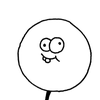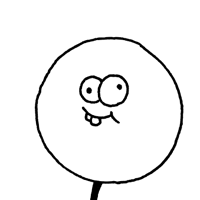MIGS: Day 1, 4:00pm: Indie in 2D: Quality Art on a Tight Budget
Against all odds, I continue my coverage of now ancient MIGs. President Nathan Vella reveals how Capybara creates amazing looking, critically acclaimed games despite small budgets and loving Toronto. I struggle to make a clever Phil Collins joke.

MIGS took place Nov. 16 - 17, 2009.
Jim McGinley ruins his right hand.
Previous Entries - 7:40am - 8:30am - 10:15am - 11:30am - 1:30pm - 2:45pm
Day 1 - 4:00pm
Indie in 2D: Quality Art on a Tight Budget
Nathan Vella

2 wonderful recaps already exist:
Andrew Webster - The art of 2D: a look at the art of indie hit Critter Crunch
Uber detailed plus pictures galoreMatthew Kumar - MIGS: 2D Economy
Extremely concise while keeping highlights.
I promise to retread lightly.
Room was packed. Nathan's machine refused work with the projecter. DVI connection developed a loose pin which refused to conform despite pressure, time and extreme jiggling.
Dude: | Do you want a DVI converter?(Dude approaches, Nathan hugs him)I thought I left it in America. |
Nathan: | What's your name, dude? |
Dude: | Chris. |
Nathan: | I owe you a beer. |
My lower leg is suddenly grabbed by an audio visual technician
"EXCUSE ME"
I may never be able to sit near the front, nor use that leg, ever again.
Nathan is laid back, yet passionate.
Charming, yet smart.
Cool, yet makes games.
Started as an artist, became art director, now president of Capybara games. I first met Nathan at the Toronto airport en route to GDC 2009. GDC 2010 is next month... coincidence?
Smart Art 
2 in-house artists did all the art for Critter Crunch...
so I'm willing to overlook the anatomical problems displayed in a picture of Biggs being electrified Blanka style (critters have no skeleton).
Prioritize. Biggs movement went through several iterations. You run a lot, you grab a lot - they focussed on that. Whereas final rainbow barf animation was first rainbow barf animation.
Spent a long time ensuring people didn't notice U.I.
3 months creating Biggs concepts (for a 1.5 year game). Need noticeable silhouettes. Showed some concept art: Super furry Biggs, Biggs on PCP, "that's a belly button, not a weiner"
"get proportions well defined [for animation]"
antennas would cost a lot to animate - gone!
Smart Tech 
Time spent on engines is time not spent on the art.
Used PhyreEngine. Sony provided awesome help - including physically flying a man from New Jersey to fix an obscure framerate issue. Nathan didn't mention who was sent... reading between lines I'm confident it was Ray Liotta.
Room's ears perked up when Nathan intonated how one might become a licensed Sony dev.
With a little customization, Capy implemented an efficient pipeline.
ToonBoom > Photoshop + custom javascript > XML + assets > Game Engine
In 1 week, built a tool that allowed artists to redo game backgrounds directly.
"If you can eliminate programmers and artists talking, that's AWESOME."
I fear the inevitable progression i.e. "If you can eliminate programmers, that's AWESOME."
On nepotism... 
Nepotism is the indie studio's best friend. 24 person strong Capy has only hired 2 people without recommendation. "Skip over ackwardness of sleeping with someone because you've already been sleeping with them." Nathan is almost as quotable as that Love guy.
Artists won't recommend bad artists.
Empower artists to recruit people they think are talented.
You get a quality artist producing quality art asap.
One employee produced art (for a game) the first day.
Style++ 
Make something that looks unique... because coincidentally it's infinitely more feasible.
Choose a style you're passionate about, because the passion shows.
People need to be passionate about the game.
Idea > Vision > Game Art > Player Experience
"Style starts with an idea, flows through the game's vision into production art,
and ends with an experience."
I'm now extra worried I'm a programmer.
At the beginning of the project, target artwork is placed on everyone's desk.
The Critter Crunch target looked remarkably similar to the final game.
"Target artwork is the glue that holds the style together....
it's the manifestation of the vision."
Manifestation? Vision? Blow and Rohrer, eat your heart out.
"on the fly development always costs more"
Q & A 
How do you keep your team together intitially?
We initially started with 12 people, and got down to 5.
"You don't keep a team together without money... you don't."
How'd you hire outside artists?
"They had a fucking amazing portfolio that you couldn't not look at."
...
Some vultures asked how Nathan got funding for his company.
Nathan graciously answered while I wondered what presentation they just attended.
Ended with a quick shoutout to the other Toronto indies in the room.
First conflict of interest for this blog.
p.s. | Em digs Capy's critically acclaimed Clash of Heroes |
p.p.s. | Images are slices of this amazing Capybara image |
p.p.p.s. | As god as my witness, I didn't realize capybaras were real creatures |
About the Author(s)
You May Also Like







.jpeg?width=700&auto=webp&quality=80&disable=upscale)








